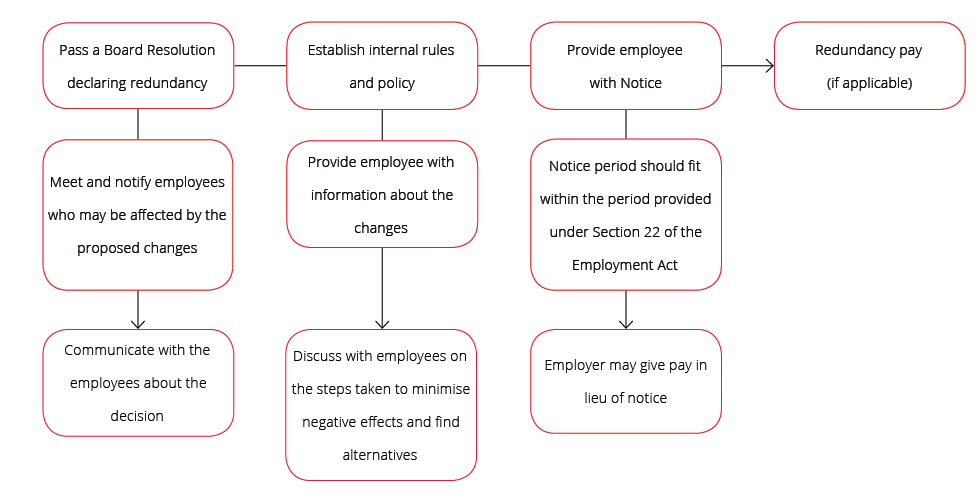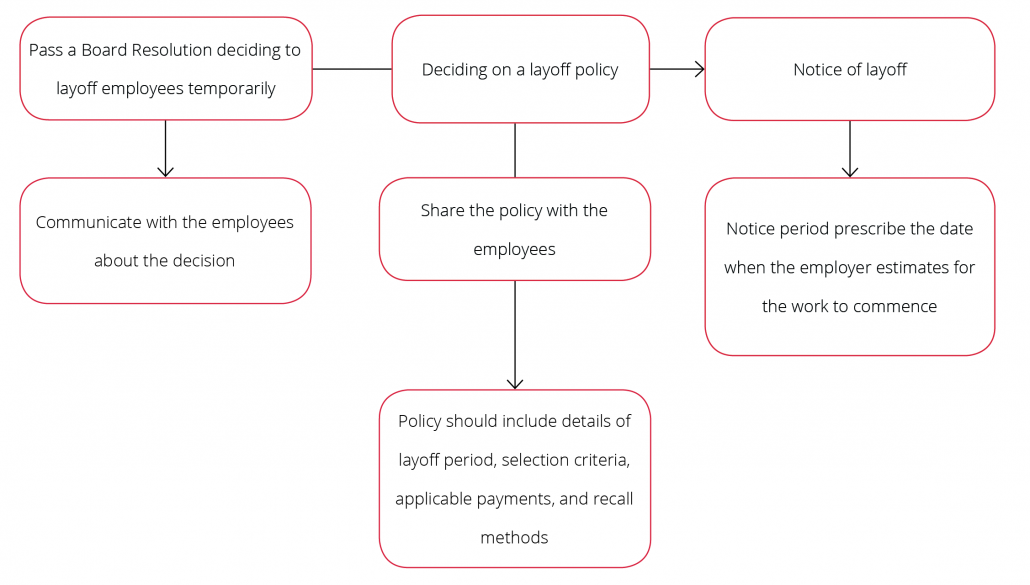COVID-19: Workforce Restructuring
by Rafa Rasheed
Prelude
In connection with the COVID-19 pandemic, many businesses are considering, or have already reduced their workforce due to the interruption of business operations as a result of measures implemented by the government or due to general downturn in business. Given the uncertainty that lies ahead and challenges in sustaining a full workforce, many businesses are considering redundancy or temporary layoffs of employees to sustain the business or minimize the costs.
Employers need to be wary of the rights of the employees in an unfortunate situation of a layoff, redundancy or any other measure put in place to reduce the costs. One of the biggest challenges for the employers would be to ensure that the employee’s rights are protected while measures are implemented within the spirit of the law.
This Guide will answer some important questions employers would come across in a situation like this and will help them take appropriate measures within the boundaries of the law.
What are the options available?
The Maldives Employment Act1 does not explicitly provide measures that the employer can implement to combat a pandemic or an economic downturn. With reference to foreign jurisdictions, the most common approaches applied by employers in scaling down of workforce during an economic recess can be identified as redundancy and temporary lay-off of employees.
Is it the same?
Temporary layoff of employees is where the employer does not provide work to the employees (and sometimes no pay) for a period while retaining them as employees. On the other hand, redundancy includes dismissal of employees as a result of business restructuring or weakening of the financial situation of the company.
As mentioned previously, although the two processes are not explicitly laid out in the Employment Act, it has been developed through the judicial precedents.
The following table summarizes situations where employers can consider Layoff and Redundancy.
| Possible outcomes | Temporary layoff | Redundancy |
| Temporary stay of an employee or a group of employees for business reasons. | ✔ | ✖ |
| The work is no longer required, and the employee is asked to leave in order to reduce the workforce | ✖ | ✔ |
| Termination for disobeying instructions given by the employer | ✖ | ✖ |
What are the elements?
When employees are temporarily laid off or dismissed by way of redundancy, both Procedural Fairness and Substantive Fairness needs to be achieved. Simply stated, Procedural Fairness is achieved where the due process is followed before the layoff or dismissal. Whereas Substantive Fairness is achieved only when the employee is dismissed on a just and reasonable ground.
The test or elements to be satisfied in establishing Procedural Fairness and Substantive Fairness are well developed in the Maldivian Law2.
Redundancy
Unlike temporary layoff, the concept of redundancy is more developed in the Maldivian context, where the basic requirements to be fulfilled – both substantively and procedurally – in declaring redundancy has been provided for in the case laws3.
Substantive Requirements
Previously decided cases have highlighted that Substantive Fairness in case of redundancy can only be achieved when a decision on redundancy was made in good faith, based purely on economic reasons faced by the company. As such, if your business is being closed or severely affected by COVID-19 this element can be considered fulfilled.
Procedural Requirements
On the other hand, Procedural Fairness has several elements to it. Following are some important aspects that need to be considered.
- The employees should be informed beforehand that the employees are to be made redundant due to an economic reason (economic impact of COVID-19)
- The employees should be informed beforehand the processes and policies which will be followed in dismissing the employees.
- The employees should be given notices in accordance with the Employment Act or salary in lieu of the notices.
- Where the employer has decided to provide a redundancy payment for the employees who are being made redundant, a policy outlining details of such payment should be made in advance and should be communicated to the employees.
Note that the employer does not necessarily have to make a redundancy payment. However, if the employer plans to make a redundancy payment, the details of such payment should be made available to the employees. The important procedures and documentations that employers need to strictly follow when going about adopting the said option is summarised below.
[/av_textblock]
Notice period for Redundancy
As mentioned above where an employer decides to dismiss the employees under redundancy, employees should be afforded with statutory notice periods. These notice periods differ depending on the length of their employment period. This can be summarized as below.
- For any person in employment for more than six months but less than one year: 2 weeks notice.
- For any person in employment for more than one year but less than five years: 1 month notice.
- For any person in employment for more than five years: 2 months notice.
Employers may pay in lieu of the notice periods and dismiss the employees immediately.
Further, it has to be noted that, since the dismissal of employees by reason of redundancy ends the employment relationship, employees have a right to encash salary for their unutilised days of Annual Leave.
Temporary Layoffs
In case of temporary layoff, although a clear guidance on the procedure to be followed is not available, sending the employees on paid/unpaid leave for a period of time has been recognized as a mechanism to cope with temporary disruption of business of the company in the aforementioned case laws.
With reference to the application of the layoff procedure in other democratic jurisdictions and the aforementioned redundancy procedure, the necessary procedural requirements to be followed in a temporary layoff procedure can be summed up as below:
As mentioned-above, layoffs are not well developed within the Maldivian Legal System. This may pose a risk of future claims by employees. Hence, it is important to review the employment Agreements before instigating a layoff process. It is also important to note that unlike redundancy, in the case of temporary lay-off the employer-employee relationship doesn’t necessarily end.
Further Requirements
In addition to the procedural requirements, in case of both redundancy and layoff the employer should be able to demonstrate how the employees have been selected, that the decision was made in good faith and was not directed at a certain employee or group of employees4.
Employers should also note that where employees refuse to obey the guidelines and instructions given during the pandemic, employers would still have the authority to terminate the employment Agreement with due consideration to the Employment Act and Employment Agreement.
In Summary
In these difficult economic times, most employers may have to minimise the workforce in order to save the business. If it is not done right, the employer may end up with years of litigation with affected employees. Hence, to reduce such exposure, it is important that businesses review their employment contracts, HR policies, to keep proper documentation, and follow the procedural requirements thoroughly and seek professional advice before instigating the process.
For additional information with respect to this publication, please contact the following members of our team:






